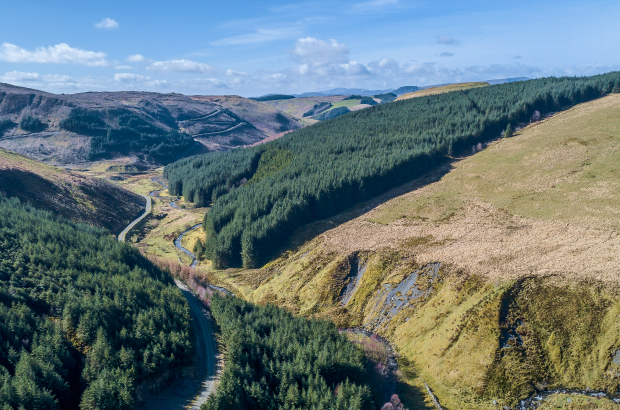Land Business Update | Week commencing 15 September 2025
Farming & food
Modelling the impact of IHT reforms on farm profitability (UK)
We have modelled the likely liability and affordability of the proposed changes to inheritance tax on a range of farm sizes. Our modelling assumes farmers will use some of the most straightforward tax-planning steps – such as dividing assets between spouses, restructuring wills to secure APR/BPR relief, and making lifetime gifts. With these measures, annual IHT liabilities for farms making typical amounts of profit (i.e., in the middle 50% of performance) range from 44% to 124% of annual profits.
| Small | Medium | Large | Very large | |
| ~ 67 ha | ~ 149 ha | ~ 221 ha | ~ 380 ha | |
| Net worth | £3.2m | £4m | £5.5m | £8.8.m |
| IHT liability (pre-planning) | £40,000 | £280,000 | £560,000 | £1,240,000 |
| IHT liability (post-planning) | £0 | £90,000 | £290,000 | £690,000 |
| Annual IHT liability (over 10 years) | £0 | £9,500 | £28,800 | £68,500 |
| Farm profits (with no Basic Payments) | £9,700 | £21,600 | £32,100 | £55,200 |
| IHT liability (post-planning) as % of profits | 0% | 44% | 90% | 124% |
| IHT liability (post-planning) as % of worth | 0% | 2% | 5% | 8% |
The analysis also shows that while larger farms may face higher liabilities – since allowances have a smaller relative impact – affordability is strongly influenced by overall business performance. For instance, a very large farm performing around the industry average could face an IHT liability equivalent to 124% of profits, whereas a similarly sized farm in the top 25% might see a liability closer to 33% of profits.
In terms of what to do, the priority is gaining a clear understanding of your current position. This starts with obtaining a comprehensive, accurate valuation of your land, machinery, livestock, and other assets from a RICS-registered valuer. It is also important to explore a range of business strategies with your accountant, legal and property advisers.
Business and succession planning is about more than tax alone. Affordability and the long-term resilience of the business are equally crucial. A farm business review can help benchmark performance, challenge assumptions, and identify a realistic path forward for improving financial performance and achieving growth. Our experience is that higher-performing farmers don’t always have the best soils or the largest farm. What sets them apart is their attitude and management style.
If you’d like to discuss how we can help you prepare for the future, contact Nick Watson, Head of Private Client.
Emma Reynolds replaces Steve Reed as environment secretary (UK)
She is the sixth secretary in the past four and a half years, which is disappointing in terms of continuity and speed of action as it is estimated by civil servants that it takes three to six months to regain momentum each time a secretary of state is changed. It is largely unknown what her views are on farming and the environment but The Times reports that she is well thought of by business and that she will take her brief seriously and prepare diligently.
Natural capital & environment
Rules on burning on deep peat are changing (England)
From 30 September, land managers must apply for a licence from Defra to burn on peat deeper than 30 cm if the land is within a less favoured area (LFA), so triple the area protected under the previous 40 cm or deeper rule. Burning under licence can still happen under four specific circumstances: conserving natural or historic environments, public safety, reducing wildfire risk, or research / education purposes. Upland peat is one of the nation’s biggest carbon stores but when it is drained and burned it releases some of its carbon and so contributes to climate change. Also, heathy peatlands store massive amounts of water and so help reduce flood risk. 80% of England’s peatlands are degraded, and the government says that rotational burning contributes to their decline. The change follows a consultation and the government’s assessment of the consultation responses is that restoring peatlands to wetland habitats is the best long-term strategy to increase their resilience to fire. The Moorland Association claims that since the introduction of the licensing rules, the area burned and / or cut has reduced by over 70%. A ‘refreshed’ Heather and Grass Management Code will be published in autumn 2025.
Spruce bark beetle – national monitoring project (England, Wales, Scotland)
Woodland owners and managers can take part in this project, which involves hosting pheromone traps to catch the beetles to assess their range. Taking part will help further develop the early warning system to monitor and prevent the establishment of the beetle. Follow this link to register your interest.
Really useful new good practice guide on improving outdoor places for visitors (UK)
The guide, published by The Wildlife Trusts, is aimed at anyone who looks after publicly accessible land. It includes practical steps that can be taken to make places easier for people to visit and enjoy, case studies and lots of links to useful sources. For example, the section on signs is likely to be useful to many land managers. It’s got links on how to write in plain English (I’ll be reading that one!) and advice from the Royal National Institute of Blind People (RNIB) on improving the accessibility of signs and information. There are also good sections on parking and public transport, visitor centres, cafes and shops, and on getting feedback.
30 x 30 target looks increasingly challenging to meet (UK)
The target – to protect 30% of land and sea in the UK for nature by 2030, which was established under the previous government – is looking hard to achieve unless there is a step change in management. The assessment comes from the Wildlife and Countryside Link, a group of environmental organisations, which assess that only 2.83% of England is well protected for nature. This includes SSSIs, which are supposed to be the environmental jewels of the country but whose condition for wildlife is still deteriorating. The figures are higher in Northern Ireland and Scotland, and lower in Wales. This is sobering data but with collective will and action, it is possible to improve the situation.
Rural economy & property
Landlord instructions to let houses out fall to lowest level since COVID (UK)
The measure of landlord instructions, which is the difference between the share of agents reporting rising and falling listings, dropped to -37, the lowest since April 2020, which was during COVID lockdown. The data is from the RICS’s UK Residential Market Survey for August. The reduction in instructions is attributed to landlords leaving the market because of tax rises, the upcoming Renters’ Rights Bill and higher interest rates on buy-to-let mortgages.






